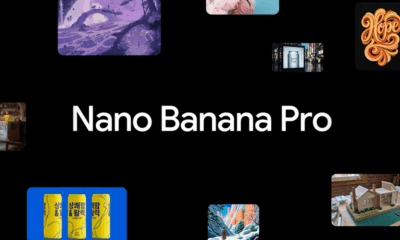SOCIAL
Elon Musk Outlines Coming X Premium Subscription Packages, Including a Higher Priced Ad Free Option

X is looking to move to the next stage of its subscription package push, with X owner and CTO Elon Musk outlining two new X Premium packages that will be released shortly in the app.
Two new tiers of X Premium subscriptions launching soon.
One is lower cost with all features, but no reduction in ads, and the other is more expensive, but has no ads.
— Elon Musk (@elonmusk) October 20, 2023
As outlined by Musk, a key element of X’s new strategy is to offer no ads for paying users, which is based around the idea that X Premium take-up this far has been low because as X has acknowledged, most users never post in the app.
A lower-cost tier will still include ads, but you’ll get access to post editing, longer video uploads, a checkmark, etc., while current X Premium users will still get half the ads, at least within certain app elements.
Musk hasn’t outlined the pricing of the new packages, but you’d assume that the top tier will have to be higher than $US12 per month, in order to offset the losses that the company will incur due to reduced ad exposure. The lower tier will obviously be lower than the current $US8 package, but the question then is will it be low enough to inspire much more take-up, when 99% of X users, thus far, have shown no interest at all in paying to use the app?
In theory, the concept of charging users to access X does make logical sense.
When Elon Musk took over at Twitter, the company was on relatively unstable financial footing, which, according to Musk, put it at risk of going bankrupt within months.
In order to solve this, Musk settled on a solution that could theoretically address several of the platform’s key problems all at once.
- Musk had made a big noise about bots taking over the app, noting that, in his team’s estimations, at least 20% of active Twitter profiles were actually bot accounts. Part of Musk’s takeover pitch was that he would banish bots, a problem that no social platform has been able to conquer at scale.
- Twitter clearly needed to increase its cash flow and operating margins, while also, ideally, reducing its reliance on ad dollars, which means that the app is then also bound by advertiser demands in regards to moderation, brand safety etc.
- Musk also had personal gripes with the existing verification system, because many publications and identities that he dislikes held a blue tick marker of authority in the app. In this sense, buying the platform gave him more power to address what he sees as mainstream media manipulation.
Boosting verification take-up would address all of these key points, and Elon had initially set a target of the platform bringing in at least 50% of its revenue from subscriptions in the short term.
If he could get every active user to pay, that would solve all of Twitter’s major problems. And as a bonus, it would also connect user credit cards to their presence in the app, which could be a valuable step towards facilitating expanded payments and purchases in-stream, another aspect of his “everything app” plan.
In theory, this all makes sense. But the problem is that, in reality, people aren’t just going to give you money for nothing of perceived value in return.
Musk’s first misinterpretation was the assessment that people would pay for a blue checkmark, because of the perceptual value it held in the app. For years, users had been looking for a way to get themselves a blue tick, in order to gain an extra level of importance in the app, at least in an aesthetic sense.
But the problem is, Elon also used this as an ideological whip, as a form of punishment for those that he dislikes.
As a result, in making the decision to also take the verification checkmark away from all the previously approved profiles in the app, that immediately eliminated the value of what the marker represents, because as soon as it was scaled back to only paying users, no one saw it as holding any real relevance anymore.
So he essentially de-valued his own product, almost as soon as he created it, all based on his own personal bias. That’s at least partly why fewer than 0.5% of X users have signed up to pay $8 a month, and while these new tiers will add additional considerations to this, it’s hard to see it becoming a more significant consideration for many.
The other element that Musk has seemingly overlooked is that the vast majority of users don’t post at all in the app, so adding elements like reach boosts and posting tools hold literally no value to 80% of the product’s target market.
Which is why X is now moving to ad reductions instead, in the hopes that that will hold more appeal. But really, most people are used to ads, and are not overly bothered by them in-stream. Yes, some people will pay, and in that sense, it could increase take-up. But I would hazard a guess that total X Premium subscribers will remain lower than 1% of X’s total audience, even with these new options.
That’s also why X’s $1 to post experiment will also fail, because most people don’t post, and don’t want to post in the app.
Musk’s view is that this small fee will help eliminate bots, but it’s too low to act as a significant deterrent for bot armies (who can just add this into their flow-through charges to customers), and if he prices it any higher, nobody will pay.
But again, in theory, it does make sense. If you force everyone to connect a credit card, a phone number, and pay for a profile, that should at as a significant impediment for those creating bot accounts. Cybersecurity experts have suggested that that won’t be the case, but you can see, conceptually, where Musk is coming from, and why he’s taking this approach, even if it has been unpopular and highly criticized.
So what could Elon have done differently?
My argument would be that X’s subscription push could have worked, and might still, if X were to concentrate on providing value add elements for your money, rather than trying to just make people pay.
Businesses, for example, would certainly consider paying for enhanced analytics, which X could absolutely accommodate. Various third-party tools provide analysis of X audience, including demographic info, words in bios, hashtag usage, location, comparative data between accounts, etc. There’s a heap of valuable X analytics that brands already pay for within third-party apps, which X could do much better at facilitating direct.
Building that into its business package would then provide real reason to pay, which X has thus far missed.
For regular users too, there are other add-on options that could hold more appeal. The model here would be Snapchat’s “Snapchat+” offering, which has been by far the most successful social subscription package, reaching 5 million paying users, which is 5x more the number of X Premium subscribers, despite it being launched a year after X’s program.
X could also look to offer ID verification for a price, with an official checkmark for confirming your identity, and reach benefits once confirmed.
There’s a range of options that X could explore, and its subscription push could work. But it likely needs to be rolled out over time, with the team working to build in more valuable additions to entice sign-up as it evolves.
The problem is, after cutting 80% of its staff, X’s development options are limited. And Elon also needs money right now, due to X’s difficult financial situation, which has been further complicated by Musk building billions of dollars of loan interest into the company’s obligations.
The subscription path does, logically, hold promise. But it’s a longer-term play, that’ll require behavioral shifts. LinkedIn, for example, is aiming to reach 100 million ID verified accounts by 2025, and it’s not even charging for that option.
That’s a more realistic target, based on steady take-up over time.
Essentially, X’s timeline has been accelerated too much. Maybe by necessity, maybe because that’s just how Elon operates. But at this stage, it doesn’t seem likely to take, even with new sign-up tiers.















